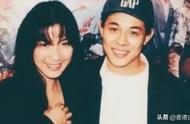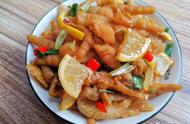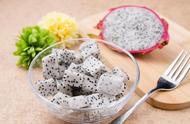1、形容词的概述:形容词是用来说明或者修饰名词、不定代词的词;在句中可以作定语、表语、宾语补足语、状语;
2、形容词在句中的位置及用法:
2.1、形容词作定语:
①形容词一般放在名词之前,复合不定代词(如something、anything、nothing…)之后;
例如:Anna is a beautiful girl. 安娜是一个漂亮的女孩。(形容词"beautiful"放在名词"girl"之前)
Do you need anything else? 你还需要别的东西吗?(形容词"else"放在复合不定代词"anything"之后)
②当形容词与表示“长、宽、高、重、老、远离”的词连用时,形容词要放在名词的后面;
例如:She is three years old. 她三岁了。
He is 1.6 meters tall. 他高一米六。
The shop is 5 meters away from our school. 那个商店离我们学校5米远。
③若有多个形容词修饰一个名词时,形容词的排列顺序口诀是:
限定 描绘 大长高,形状 年龄 和 新老;颜色 国籍 跟 材料,作用类别 往后排;
大长高:表示大小、长短、高低的形容词;如:big, long, high…
形状:表示形状的形容词;如:round, straight, curly…
年龄:表示年龄大小的形容词;如:young, old…
新老:表示新旧的形容词;如:new, old…
颜色:表示颜色的形容词;如:red, blue, green…
国籍:表示国籍、地区、出处的形容词;如:Chinese, American, Japanese…
材料:表示物质材料的形容词;如:golden, wooden, woolen, silk…
作用类别:表示用途、类别的形容词;如:medical, chemical, writing…
例如:She has a beautiful big round new blue Japanese wooden writing desk.她有一个漂亮的、又大又圆的、新的蓝色的、日本进口的木质的书写桌。
2.2、形容词作表语:形容词一般放在系动词、感官动词之后;初中常见的系动词和感官动词有"be, become, get, turn, go grow, seem, look, feel, smell, taste, sound…";
例如:She is very beautiful. 她很漂亮。 It sounds good. 听上去不错哎。
The soup smells delicious. 汤闻上去很美味。
2.3、形容词作宾语补足语:形容词一般放在宾语之后,常与"make, keep, find, leave"等词连用,构成"make/keep/find/leave sb./sth. adj. ( to do sth.)"结构,其中"sb."指某人,"sth."指某物,"adj."指形容词,"to do"指"to 动词原形",即动词不定式;
例如:I find it difficult to learn English well. 我发现学好英语很难。
Please keep the room clean. 请保持房间干净。
2.4、形容词作状语:形容词一般放在句首或句尾;
例如:Every Friday afternoon, my little sister comes home from school, hungry and tired.每周五下午,小妹从学校回到家里,又饿又累。
2.5、某些形容词前面加上定冠词the:泛指一类人,表示复数概念;作主语时,谓语动词用复数;
例如:The old should be taken good care of. 老年人应该被很好的照顾。
The poor have to work very hard to support their life.穷人必须努力工作,以此来维持生活。
3、常见形容词词组的辨析:
3.1、enough:译为“足够的”,它既可以放在名词之前,也可以放在名词之后,但是一般都放在名词之前;它也可以做副词,译为“足够地,充分地”,修饰形容词/副词时,要放在形容词/副词的后面;
例如:We don't have enough money to buy these things. =We don't have money enough to buy these things.我们没有足够的钱来买这些东西。
This child is old enough so that he can join the army. 这个孩子够大了,可以参军了。
He didn't work hard enough, so he failed the examination.他学习不够努力,所以他考试没有及格。
3.2、whole与all:
①都译为“所有的”,有两个词序:"the whole 名词";"all the 名词";
②"the whole"后面一般接可数名词单数,并且其作主语时,谓语动词要用单数;
例如:The whole building was burning. 整座楼都在燃烧。
③"all the"后面可以接可数名词复数;
例如:My little sister can remember all the words she learned.小妹能记住她学过的所有单词。
④在不可数名词前一般用"all",但有几个例外:"the whole time/all the time"、" his whole energy/all his energy"…,但在物质名词前则绝对不能用"whole";
⑤在时间名词(如day, week, month, year…)以及季节名词(spring, summer, autumn, winter) 之前,两者都可用(但要注意定冠词的位置);
例如:all (the) day /the whole day 整天
all (the) spring /the whole spring 整个春天
3.3、other与else:两个词都译为“别的、其他的”,但"other"放在名词前,"else"放在特殊疑问词(如:what, who…)和复合不定代词(如:somebody, anyone, nothing…)之后;
例如:Some students are in the classroom, and the other students are on the playground.一些学生在教室里,其他的在操场上。
Who else can answer this question?还有谁会回答这个问题?
Is there anything else in the box?盒子里还有其他东西吗?
3.4、real与true:"real"一般指东西的真假,译为“真的”; "true"则指事情或消息的可靠性,译为“真实的”;
例如:This is a real diamond and it's very expensive. 这是真的钻石,而且特别贵。
--Is that true? 那是真实的吗?
--Yes. I heard it with my own ears. 是的,我亲耳听到的。
3.5、lonely与alone:"lonely"是表示心理活动的形容词,译为“孤独的、寂寞的”,作定语或表语;"alone"作形容词时,译为“独自的、单独的”,指无人陪伴,仅作表语;"alone"作副词时,可作状语;
例如:He lives alone but he doesn't feel lonely. 他一人独住,但是并不感到孤独。
He is a lonely person. You cannot easily get on well with him.他是个孤独的人,你要和他相处好实在不易。
3.6、good与well:"good(好的)":形容词,在句中作定语和表语;"well(好地)":副词,在句中作状语;"well"还可以用作形容词,表示身体好;
例如:Doing sports is good for us. 做运动对我们有好处。
Study well and make progress every day. 好好学习,天天向上
--How are you? 你身体怎么样?
--I am very well. 非常好。
3.7、nice与fine:"nice"表示令人愉快的,可以指东西、人物外表;"fine"一般指身体好或天气好;
例如:Let's go and share the nice cake. 让我们一起去享用那个不错的蛋糕吧。
She is a nice girl. 她是一个好女孩。
What a fine day! 多么好的天气!
He's fine recently. 近来他身体不错。
3.8、sick与ill:都译为“生病的”,但是"sick"可以做定语、表语,而"ill"只能做表语;简单说就是"sick"可以用在名词前,也可以用在系动词、感官动词之后,而"ill"只能用在系动词、感官动词之后;
例如:He is ill/sick. 他生病了。
It is a sick dog. 它是一条生病的狗/ 这条狗生病了。
3.9、quick, fast与soon:"quick"与"fast"基本同义,"quick"往往指反应速度快,"fast"往往指运动速度快,而"soon"则表示时间上很快即将发生;
例如:After a quick breakfast, he hurried to school. 快速地吃过早餐后,他急急忙忙地去学校了。
A train is much faster than a bus. 火车比汽车快得多。
His father will be back to China very soon. 他的父亲将会很快回国。
3.10、too much与much too:"too much"译为“太多的”,修饰不可数名词的数量;"much too"译为“太过、过分”,修饰形容词或副词;
例如:I am full because I have had too much rice. 我饱了,因为我吃了太多的米饭。
That coat is much too expensive. 那件大衣太贵了
3.11、such和so:译为“如此”;
①such常用的结构:such a/an 形容词 可数名词单数;such 形容词 可数名词复数/不可数名词;such a/an 形容词 可数名词单数 that从句,译为:如此……以至于……
例如:My little sister is such a good girl. 小妹是一个如此好的女孩。
These are such heavy boxes. 这些箱子太重了。
He had such a terrible accident that he could never forget it.他经历了一场如此惨烈的车祸,以至于他永远不会忘记。
②so常用的结构:so 形容词/副词; so 形容词 a/an 可数名词单数;
例如:He runs so fast. 他跑得很快。
I have never seen so tall a boy. 我从未见过如此高的男孩。
3.12、interesting与interested:"interesting"译为“有趣的”,用来修饰物,作定语或表语;而"interested"译为“感兴趣的”,用来修饰人,只能作表语;" interested"常用的结构是:"be interested in…"(对……感兴趣);
例如:This is an interesting book. 这是一本有趣的书。
He is interested in the story. 他对这个故事感兴趣。
类似用法的形容词还有:boring和bored, relaxing和relaxed, moving和moved, exciting和excited, surprising和surprised…;
,












